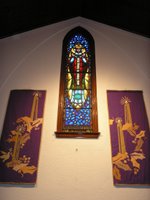
- This Sunday we will begin a new church year. Advent allows us to once again turn our attention to the preparation for the coming of the Lord. Advent is a Latin word meaning “the coming.” Officially established by church leaders in the sixth century, Advent was originally meant to be a time when Christians reflected on the meaning of Christmas. Today, fourteen hundred years after the first Advent season, many churches and families use the symbols of Advent—wreaths, candles, and calendars—to bring the spiritual meaning of Christmas alive in a way that teaches minds, touches hearts, and reflects the original purpose of the tradition. How can we see Christ more clearly, judge the world more wisely, and live in relationship with God more faithfully? Consider the following for the church and/or the home:
- sing the hymns of Advent and save the Christmas favorites for Christmas
- make a paper chain to countdown through Epiphany-using different colors for each season (purple, white, green)
- hang banners and wear vestments and stoles that reflect the colors (typically purple or blue with accents of gold) and symbols of Advent
- enjoy the children’s book Waiting for Noel by Anne Dixon
- observe times as a family. Will this mean those that live just under your roof or does family mean your church family? Include those that might live alone in your family’s activities such as sharing a meal, baking cookies or decorating a tree.
- use an Advent wreath as a teaching symbol during worship. Invite members of the congregation to light the candles. These people can represent the entire faith family: traditional family units, the widowed, the single, and the divorced. A wreath can also be placed on the dinner table for lighting of the candles prior to family devotions and prayer.
We seem so eager for Christmas to arrive. If we hurry too quickly to the celebration of Christmas, we will be unprepared to welcome Christ. Blessings for your Advent.


